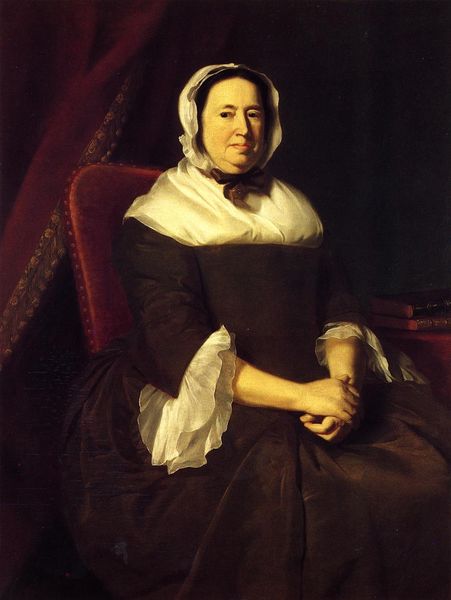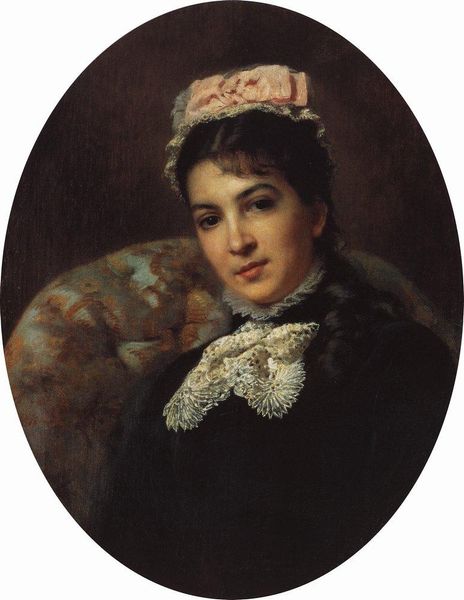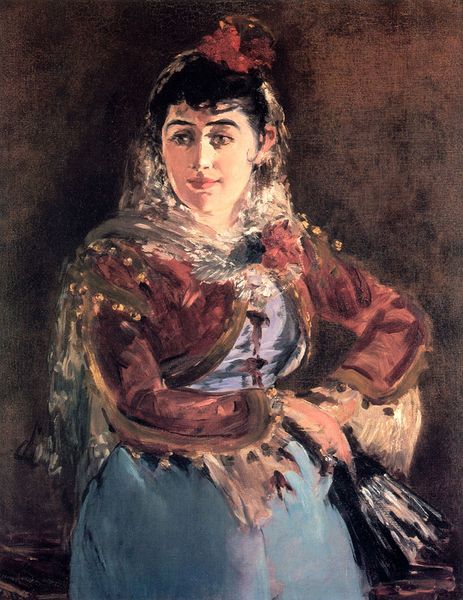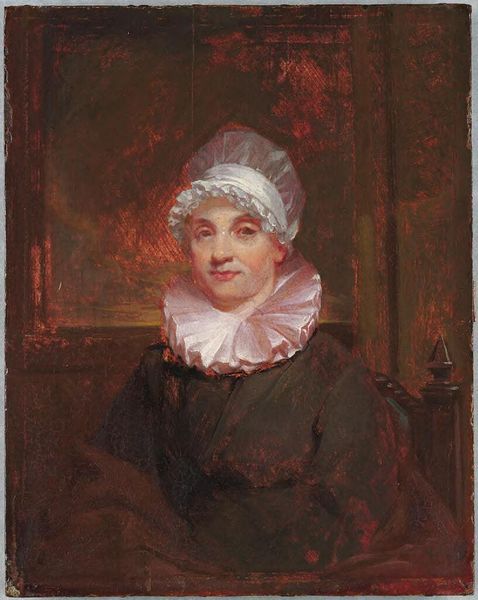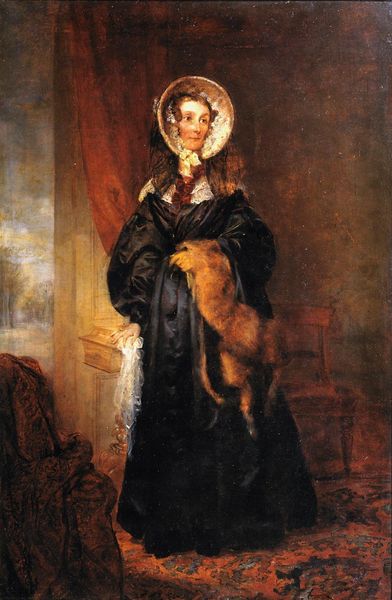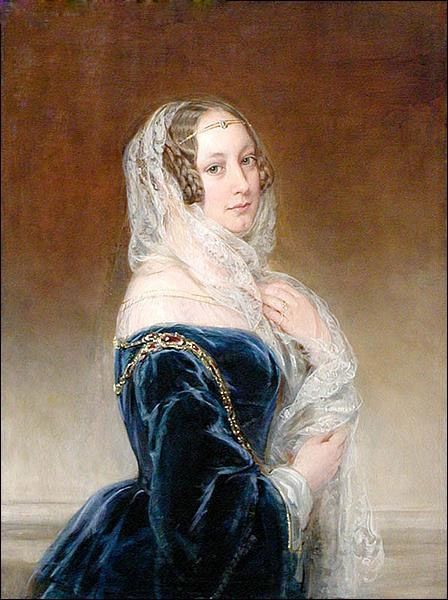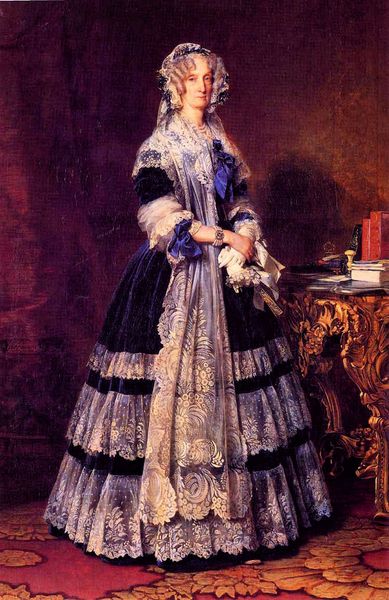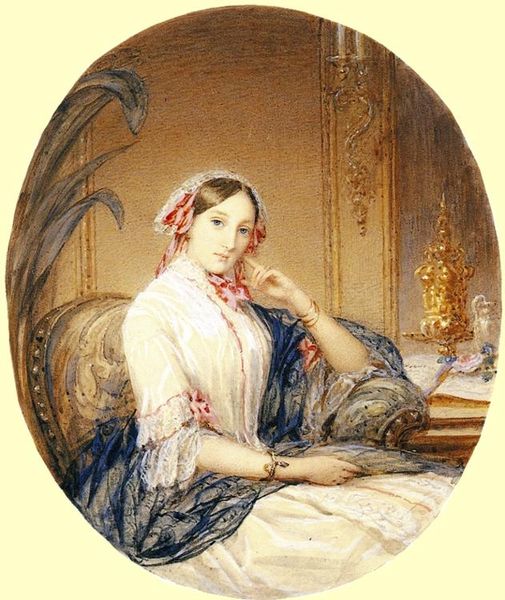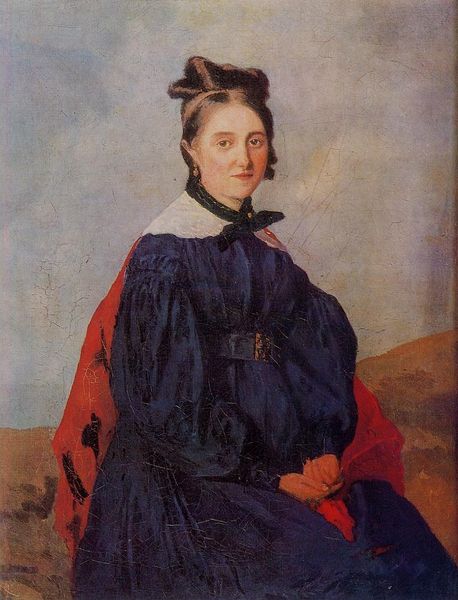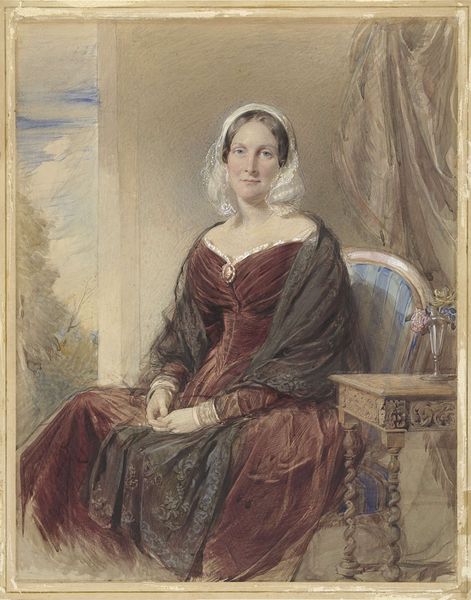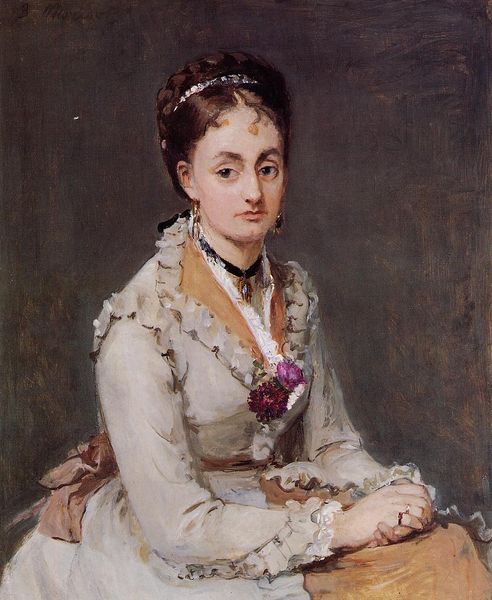
Copyright: Public domain
Curator: This is "Portrait of the Artist's Aunt, Babetta Singer," created in 1851 by Henryk Rodakowski. It’s an oil painting. The oval format and rendering of the sitter suggests both Romanticism and Realism as key stylistic approaches for Rodakowski. Editor: My first impression is a study in quietude. The colors are muted, the subject's gaze seems inward. The visible textures of the clothing contrast sharply with the smoothness of the face. I’m drawn to that contrast. Curator: Indeed, the materiality is compelling. Note the detail in the rendering of the fabric and how it interacts with light, reflecting class distinctions through meticulous representation of manufactured goods. How does this elevate or potentially commodify the sitter? Her class is reflected in how he deploys and articulates that fabric in oil. Editor: I find the representation of gender fascinating here too. The act of knitting, traditionally coded as feminine domestic labor, seems at odds with the subtle gravitas of her expression. There's a strength there that complicates easy assumptions about women's roles in the 19th century. It brings into the painting narratives of women's experiences with labor and leisure in ways that acknowledge both the limits and power of their roles. Curator: Her lace cap, the cut and texture of the garment... it’s about production on every level, even extending to how textiles signified bourgeois identity at the time. Do you see any hints that this portrait might comment on the Industrial Revolution’s increasing hold in 1850s Europe? How would mass-produced materials reflect on someone like her? Editor: I'm less convinced about directly reading industrial elements here. It may be there, but it is difficult for me to discern whether it makes an intentional social comment about Babetta. Yet there’s definitely a social narrative. The somber, almost weary affect. A record of women's realities is important during the rise of Polish Romanticism during that era. Curator: I see her posture and position suggesting of the period’s values, but maybe more embedded in a family narrative. And her knitting situates her at home as much as it speaks to the grand shifts in labor at the time. Editor: Maybe it's both. And maybe we are just bringing our 21st century analysis. Art constantly offers us new things upon re-examination through time, context, and evolving historical understanding.
Comments
No comments
Be the first to comment and join the conversation on the ultimate creative platform.
